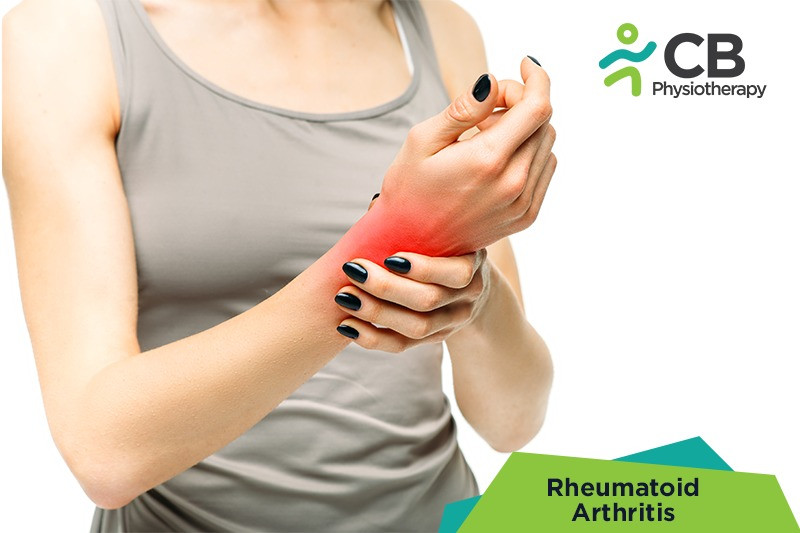
Rheumatoid arthritis is a chronic inflammatory condition that affects a wide variety of systems of the body, including the joints, skin, eyes, lungs, heart, and blood vessels. It is an autoimmune disorder that occurs when the immune system attacks its own body's tissues. Rheumatoid arthritis affects the lining of the joints, causing bone erosion, and wear-and-tear and joint deformity. Initially, the hands and feet are affected then it progresses to the other parts, but it can occur in any joint. Rheumatoid arthritis is a chronic inflammatory condition that affects a wide variety of systems of the body, including the joints, skin, eyes, lungs, heart, and blood vessels. It is an autoimmune disorder that occurs when the immune system attacks its own body's tissues. Rheumatoid arthritis affects the lining of the joints, causing bone erosion, and wear-and-tear and joint deformity. Initially, the hands and feet are affected then it progresses to the other parts, but it can occur in any joint.
Inflammation and pain in the joints symptoms are known as flares or exacerbations and the times when the symptoms disappear completely are known as periods of remission. The symptoms of RA include:
Certain factors increase the risk of developing RA or triggering its onset, though its causes are not known. Rheumatoid arthritis may occur due to:
Pathology
Rheumatoid arthritis occurs when the immune system attacks the lining of the membranes that surround the joints. Inflammation destroys the cartilage and bone within the joint. The tendons and ligaments that hold the joint together weaken and stretch, resulting in loss of joint shape and alignment.
Blood tests:
Erythrocyte sedimentation rate (ESR rate) or C-reactive protein (CRP) are elevated and presence of rheumatoid factor.
X-rays:
X-rays help to check the progression of this condition in the joints.
Magnetic resonance imaging (MRI):
Magneto resonance imaging (MRI) can help to judge the severity of the disease in the body.
Medication
NSAIDs, Corticosteroid medications, Disease-modifying antirheumatic drugs (DMARDs).
Note: Medications should be taken after recommendation by the doctor.
Surgery:
Surgery is done if medications fail to prevent slow joint damage. Surgery can help restore mobility, reduce pain, and improve function. Rheumatoid arthritis surgery may involve one of the following procedures:
Synovectomy: Synovectomy is done to remove the inflamed lining of the joint.
Tendon repair: Inflammation and joint damage may cause tendons around the joint to loosen or rupture. Surgery is done to repair the tendons around the joint.
Joint fusion: Joint fusion is done to stabilize or realign the joint and also for pain relief.
Total joint replacement: During joint replacement, the damaged part of the joint is removed and a prosthesis is made of metal and plastic.
The physiotherapist uses modalities and recommends exercises to help keep the joints flexible. The physiotherapist suggests new ways to do daily tasks such as picking up an object using the forearms.
Transcutaneous electrical nerve stimulation (TENS):
Transcutaneous electrical nerve stimulation (TENS) blocks pain signals from reaching the spinal cord. It helps to decrease muscle spasms, synovial fluid, and inflammation.
Ultrasound uses sound waves to create warmth, decreasing joint pain, inflammation, and stiffness.
Cryotherapy decreases swelling and inflammation. Cryotherapy can be used as ice packs, cold compresses on the painful area, mostly used in acute stages. Cold therapy is used in active joints where intra-articular heat increase is undesired.
Thermotherapy is used in chronic stages of rheumatoid arthritis. Heat therapy reduces muscle spasms. Heat therapy can be used for 10–20 minutes once or twice a day before exercise in the form of a hot-pack, hot water bottle, infrared radiation, paraffin, hot water bath, hydrotherapy, etc.
Rest and Splinting:
The joints are put to rest during the acute stage of the disease, if required. It relieves the pain in case of critical joint movement. Orthosis and splinting diminishes inflammation, joint stress, stiffness, and prevents deformities.
Hydrotherapy:
Hydrotherapy reduces pain and other symptoms with water. The part is submerged in warm water to relieve symptoms.
Compression Gloves:
Patients use compression gloves to reduce joint swelling and pain and increasees grip strength or hand functions from using gloves.
Massage:
Massage can help promote blood circulation and reduce muscle spasms. Massage is found to be effective for depression, elevate mood, and decrease pain.
Flexibility and strengthening exercises:
These exercises improve range of motion and help to build muscle strength. Pilates are donr as flexibility and strengthening exercises.
Aerobic exercise:
Aerobic exercises such as light walking are effective to manage chronic pain, joint inflammation, and other rheumatoid arthritis symptoms. Low-impact aerobic exercise a day and 30 minutes of strengthening exercises every other day can be incorporated as a routine.
Assistive Devices and Adaptive Equipment:
Assistive Devices and Adaptive Equipment improve functional ability and decrease pain, keeping the patient suffering from rheumatoid arthritis independent. Assistive devices and adaptive equipments have beneficial effects on energy conservation and joint protection in arthritic patients.
The patient is educated and given information about their condition and the various physical therapy and rehabilitative options that are available to improve their quality of life. They are educated about the importance of physiotherapy, the use of orthosis, and self-relaxation. Patients are also taught to perform exercises and protect the joints during their routine. Patients with active arthritis should avoid activities such as climbing stairs or weight lifting as they produce excessive stress over the tendons. In the chronic stage with inactive arthritis, conditioning exercises such as swimming, walking, and cycling with adequate resting periods are recommended.
Select your City to find & connect with our experts regarding Physiotherapy for Rheumatoid Arthritis